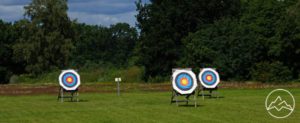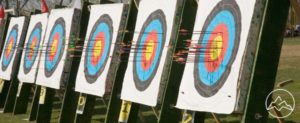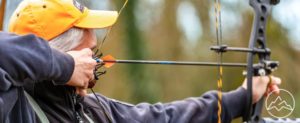According to recent statistics, the popularity of archery has been steadily increasing, with more and more individuals taking up the sport. As any archer knows, a crucial component of shooting a bow is the arrow rest. With a wide variety of rests available on the market, it can be overwhelming to choose the right one. This article serves as the ultimate guide to arrow rests, providing a comprehensive overview of the different types, their benefits, and tips for effective use. Whether you are a beginner or an experienced archer, understanding the intricacies of arrow rests is essential for maximizing accuracy and performance. From shelf rests to drop away rests, each type has its unique advantages and considerations. By delving into the details and offering expert advice, this guide aims to help archers make informed decisions and improve their shooting skills.
Key Takeaways
- There are various types of arrow rests available, including shelf rests, stick-on rests, screw-in rests, rest and plunger design, launcher rests, containment rests, and drop away rests.
- The type of arrow rest chosen should be based on factors such as the type of bow used, shooting style, and intended use.
- Launcher rests provide a smooth and consistent release, which can lead to increased accuracy.
- Containment rests offer better security and stability, making them a good choice for hunting.
Types of Arrow Rests
There are various types of arrow rests, including shelf rest, stick-on rest, screw-in rest, rest and plunger design, launcher rest, containment rest, and drop away rest, each with its own unique features and benefits. Shelf rests are commonly used for recurve bows and are made of fabric material. Stick-on rests are simple and affordable, while screw-in rests are known for their durability and accuracy. The rest and plunger design incorporates an arrow plunger that helps center the shot and absorb arrow imperfections. Launcher rests, which can have two prongs or a single blade, are favored for target shooting. Containment rests fully encapsulate the arrow, providing better security for hunting. Drop away rests, available in limb-driven and cable-driven options, offer full containment but drop away upon release, allowing for the most accuracy. When choosing the right arrow rest, it is important to consider the type of bow, shooting style, and intended use. Each type of rest has its own pros and cons, so it is crucial to select the one that best suits individual needs.
Benefits and Differences
Launcher rests and containment rests are two types of arrow rests that offer different benefits and have distinct differences in their design and functionality. Launcher rests, such as the prong and single blade designs, are commonly used for target shooting. They provide a smooth and consistent release of the arrow, resulting in increased accuracy. On the other hand, containment rests fully enclose the arrow, providing better security and stability during hunting situations. However, they may introduce slight inconsistencies due to increased contact with the arrow. When choosing the right arrow rest for your bow, it is important to consider your specific needs and shooting style. Launcher rests are ideal for precision target shooting, while containment rests are better suited for hunting situations where arrow security is crucial. It is also essential to practice with your chosen arrow rest to ensure optimal performance.
Tips for Effective Use
To optimize the performance of your chosen arrow rest, it is crucial to adhere to certain guidelines that enhance its effectiveness and ensure consistent accuracy. Proper positioning is key when using an arrow rest. It is important to position the rest in a way that aligns with your shooting style and preferences. Experiment with different positions to find the one that works best for you. Additionally, choosing the right rest is essential. Consider factors such as the type of bow you are using, your shooting goals (target shooting or hunting), and your level of experience. Take the time to research and test different arrow rest options to find the one that suits your needs. Remember, practice and familiarity with your chosen arrow rest are also important for achieving optimal results.
Frequently Asked Questions
What is the average lifespan of an arrow rest?
The average lifespan of an arrow rest can vary depending on factors such as maintenance and usage. Regular arrow rest maintenance, including cleaning and lubrication, can help prolong its lifespan. Signs of a worn-out arrow rest may include excessive noise, inconsistent arrow flight, or visible wear and tear. It is important to regularly inspect the arrow rest and replace it if necessary to ensure optimal performance and accuracy during shooting.
Can arrow rests be used on all types of bows?
Arrow rests can be used on various types of bows, including compound bows, recurve bows, and longbows. While different types of arrow rests may have specific compatibility requirements, there are alternatives available for each type of bow. For example, compound bows often use drop away rests for enhanced accuracy, while recurve bows can utilize shelf rests made of fabric material. It is important to consider the specific needs and shooting style of the archer when choosing an arrow rest.
Are there any safety precautions to keep in mind when using an arrow rest?
Proper maintenance and adjusting for optimal performance are important safety precautions to keep in mind when using an arrow rest. Regularly inspecting the rest for any signs of wear or damage is crucial to ensure its functionality. Additionally, adjusting the rest according to the specific bow and arrow setup is necessary to achieve optimal performance. This includes setting the proper height, centering the arrow, and making any necessary fine-tuning adjustments. Following these precautions will help maintain safety and maximize shooting accuracy.
How often should arrow rests be replaced or upgraded?
Arrow rests should be replaced or upgraded periodically to ensure optimal performance and accuracy. While the frequency of replacement may vary depending on usage and wear, it is generally recommended to upgrade arrow rests every few years or when noticeable wear and tear occur. Maintenance tips include regularly inspecting the rest for any damage or signs of wear, cleaning it to remove dirt and debris, and adjusting it as needed for proper alignment. Upgrading arrow rests can improve shooting consistency, enhance arrow flight, and provide a better overall shooting experience.
Can arrow rests affect the speed or trajectory of the arrow?
Arrow rest adjustment can indeed affect the speed and trajectory of an arrow. Choosing the right arrow rest is crucial for optimizing performance. Proper adjustment ensures that the arrow is supported correctly, reducing contact and friction during the shot. This minimizes any negative impact on speed and trajectory. Factors to consider when selecting an arrow rest include the type of bow, shooting style, and intended use. Consulting with experts or conducting thorough research can help in making an informed decision.
Conclusion
In conclusion, the wide array of arrow rests available in the archery industry provides shooters with a multitude of options to enhance their bow shooting experience. From the simplicity of stick-on rests to the precision of screw-in rests, each type offers its own benefits and differences. Launcher rests, containment rests, and drop away rests cater to different shooting requirements, whether it be target shooting or hunting. To ensure effective use of arrow rests, shooters should practice and fine-tune their setup for optimal accuracy. By understanding the types, benefits, and tips for arrow rest usage, archers can elevate their shooting prowess to new heights.












